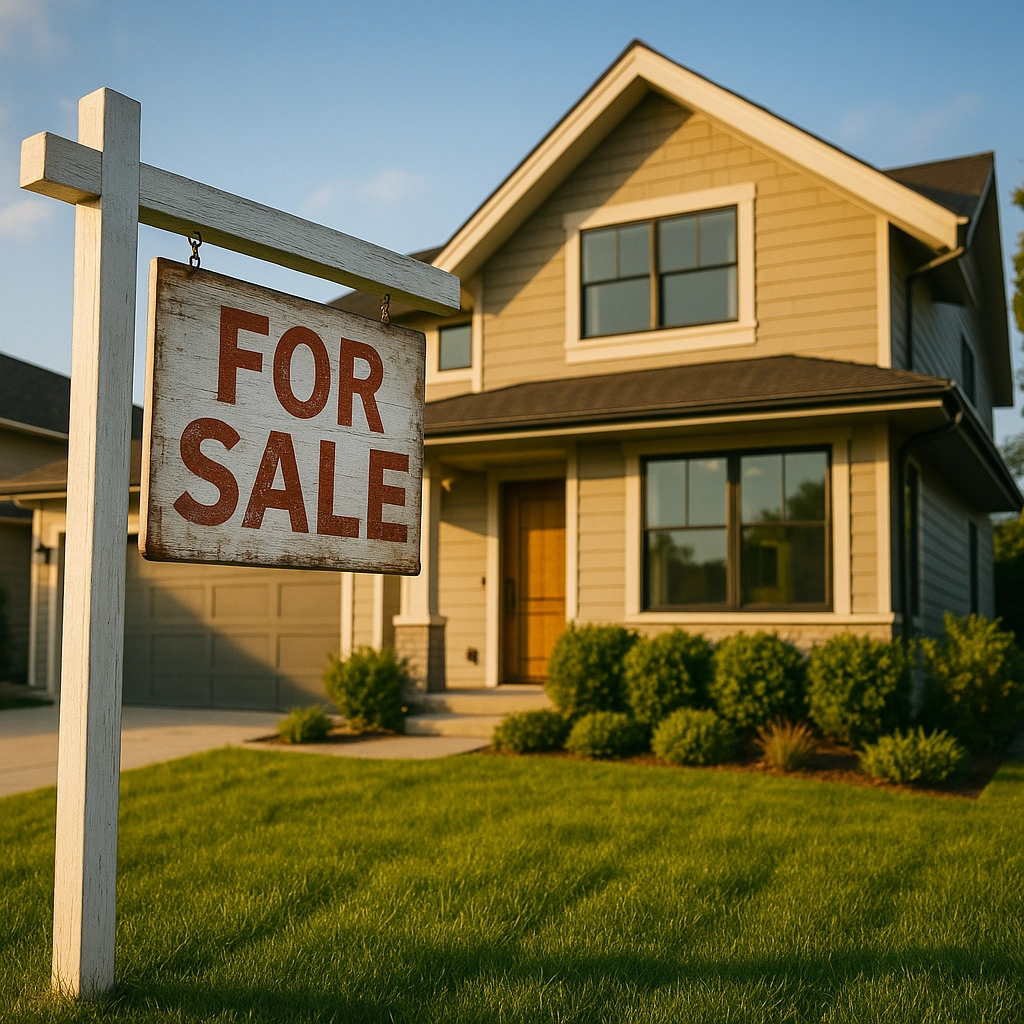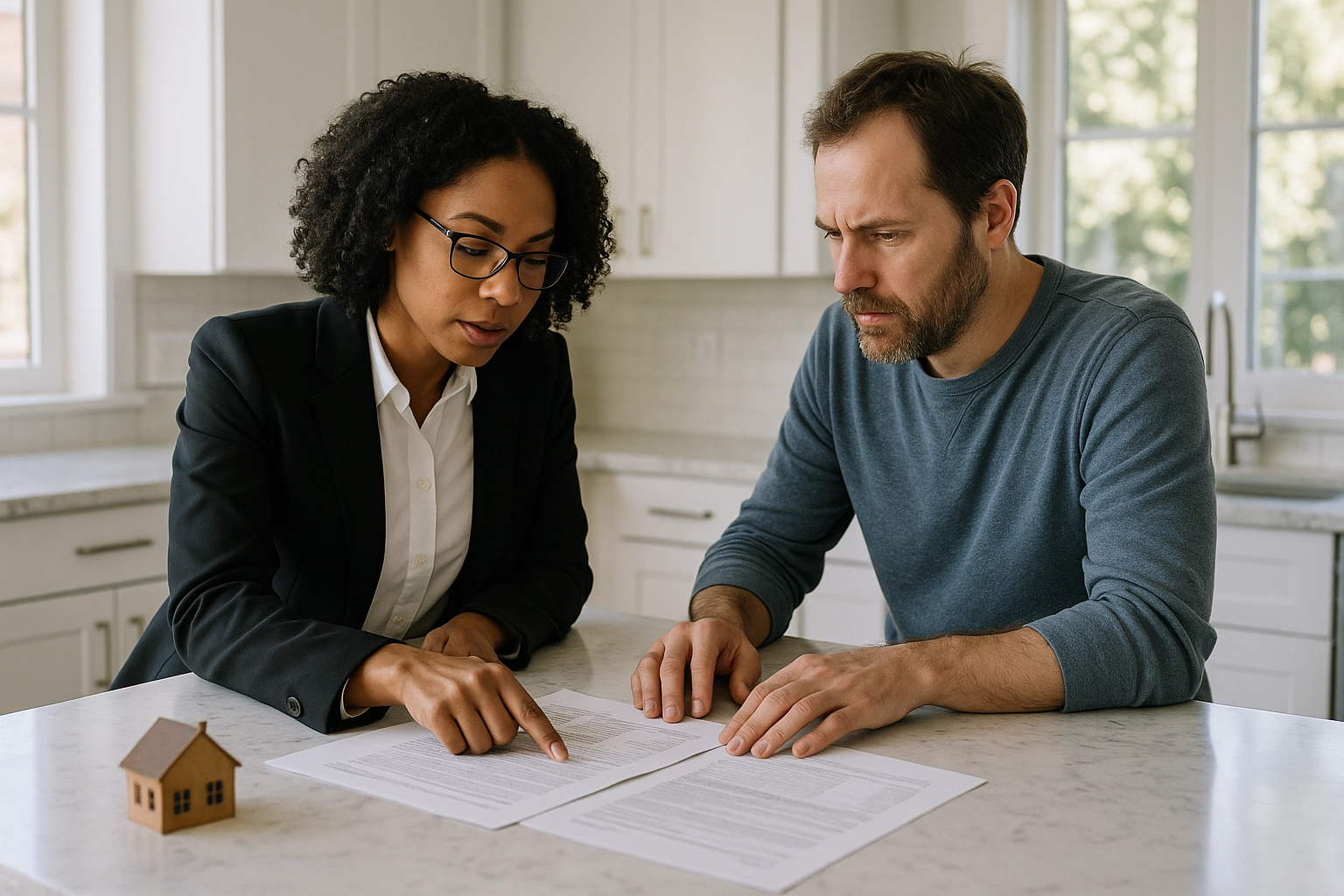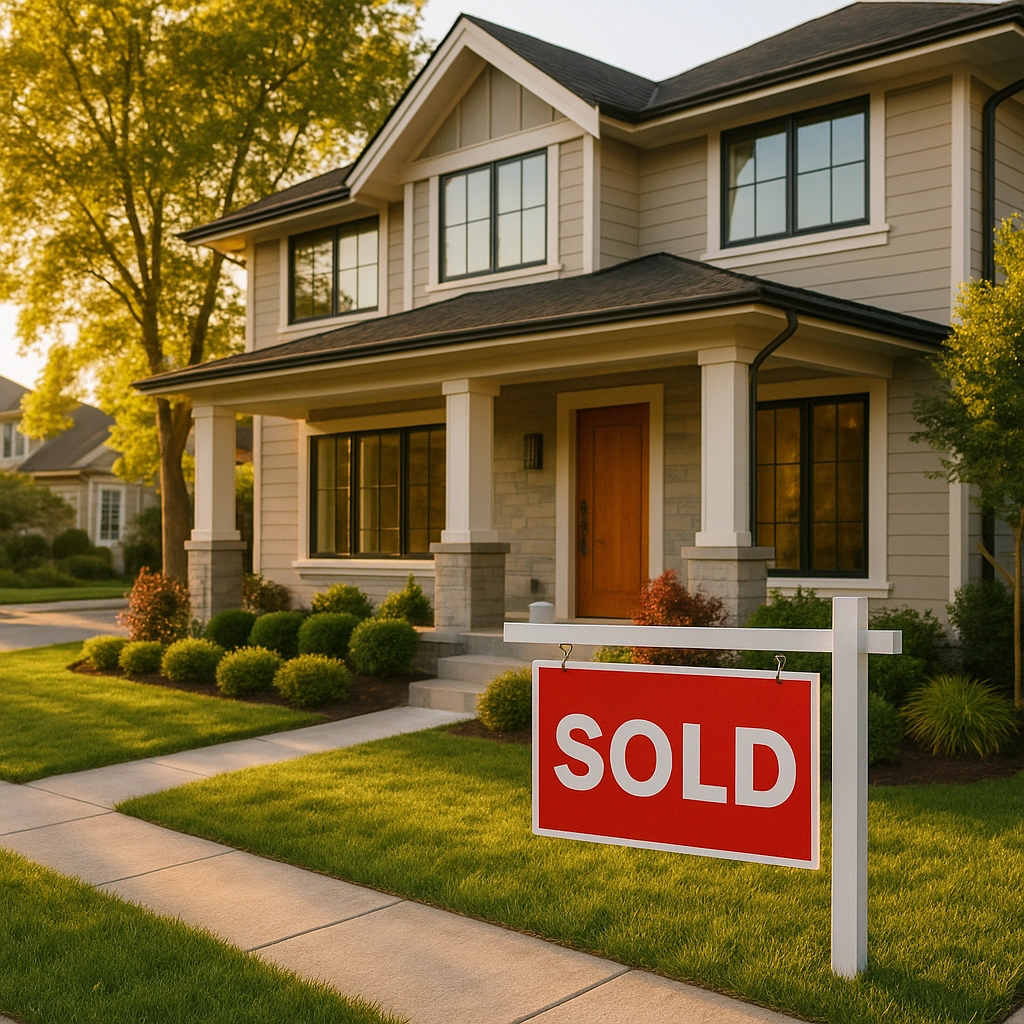
So your home has been sitting on the market for 53 days, and you’re starting to wonder what’s going wrong. Here’s the thing – 53 days is actually right around the national median for how long homes stay on the market these days. But if you haven’t gotten any serious offers or even much interest during this time, it’s definitely worth taking a step back and figuring out what’s going on.
The good news? Most of the reasons homes don’t sell are totally fixable. Let’s dive into what might be holding your sale back and, more importantly, what you can do about it.
The Big Three Reasons Your Home Isn’t Moving
It’s Priced Too High (This Is Usually The Problem)
Let’s be real here – overpricing is hands down the biggest reason homes sit on the market. When your house is priced above what buyers expect to pay, they often won’t even bother to look at it. They’ll just scroll right past your listing and focus on homes that seem like better deals.
I get it. You’ve probably put money into renovations, or you remember when your neighbor’s house sold for a certain amount a couple years ago. But here’s the tough truth: the market doesn’t care about your emotional attachment or how much you’ve invested. It only cares about what buyers are willing to pay right now.

The Market Has Shifted
Real estate markets are constantly changing, and what worked six months ago might not work today. If your area is experiencing a cooling market with dropping prices, there are simply fewer buyers out there, and the ones who are looking have become pickier and more price-sensitive.
This doesn’t mean you’re stuck – it just means you need to adjust your strategy to match current conditions rather than hoping things will go back to how they were.
Your Home Isn’t Showing Well
First impressions matter huge in real estate, and most buyers start their search online. If your photos don’t grab attention, or if your home doesn’t look appealing when people walk through the door, you’re fighting an uphill battle.
This could be anything from poor curb appeal to cluttered rooms, outdated fixtures, or just bad lighting in your listing photos. Sometimes it’s not that your home is bad – it just isn’t presenting itself in the best possible way.
Time for a Reality Check: What You Need to Do
Get Serious About Pricing
First things first – you need to take an honest look at your pricing. Pull up recent sales (we’re talking within the last 3-6 months) of similar homes in your neighborhood. Look for houses with comparable square footage, bedroom and bathroom counts, and similar features.
If your home is priced above these recent sales, you’ve probably found your problem. Consider a price reduction to get in line with what the market is actually paying. I know it’s not fun to hear, but pricing just below market value can actually result in multiple offers and a higher final sale price.
Have an Honest Conversation with Your Agent
Your real estate agent has probably given you feedback and suggestions throughout this process. Now’s the time to really evaluate whether you’ve followed their advice. Have you implemented their staging suggestions? Did you make the repairs they recommended? Were you open to their pricing guidance?
If you’ve been resistant to your agent’s recommendations, it might be time to reconsider. They’re seeing how other buyers are reacting to your home and can give you valuable insights into what’s not working.

Improve Your Home’s Presentation
Take a critical look at how your home shows. Walk through it like a buyer would. Is the curb appeal inviting? Are the rooms clean, decluttered, and well-lit? Do your listing photos make the home look spacious and appealing?
Consider investing in professional photography if you haven’t already, or updating your photos if the current ones aren’t doing your home justice. Sometimes a fresh set of high-quality photos can make a huge difference in online interest.
Look at any necessary repairs or improvements that could be holding back the sale. You don’t need to renovate everything, but addressing obvious issues like peeling paint, broken fixtures, or overgrown landscaping can go a long way.
Alternative Strategies When Traditional Methods Aren’t Working
Consider Cash Buyers or Investors
If you need to sell quickly or if the traditional market just isn’t responding, exploring cash buyer options might make sense. These sales typically close faster and with more certainty, though you’ll usually get less than full retail market value.
This could be a good option if you’re relocating for work, dealing with financial pressures, or just tired of the uncertainty of the traditional market.
Offer Buyer Incentives
Sometimes a little sweetener can make your home more attractive to buyers. Consider offering to cover some of the buyer’s closing costs, providing a home warranty, or being flexible on the closing date.
These incentives can effectively lower the buyer’s cost without you having to reduce your asking price, which might be appealing if you’re close to getting the price you want.

Think About Temporary Rental Options
If market conditions are particularly challenging right now, you might consider renting your home temporarily. This gives you income while you wait for better market conditions, and you can always put it back on the market later.
This isn’t the right choice for everyone, but it can be a good option if you don’t have immediate pressure to sell and believe the market will improve.
Red Flags That Suggest Bigger Issues
No Showings at All
If people aren’t even coming to look at your home, you’ve probably got a pricing or marketing problem. Buyers who are serious about purchasing will look at homes that seem reasonably priced, so a lack of showings usually points to being priced too high or poor online presentation.
Showings But No Offers
If people are coming to look but nobody’s making offers, you might have presentation or condition issues. Pay attention to feedback from showings – do people mention specific concerns? Are there recurring themes in the comments?
Your Home Has Been Sitting Longer Than Similar Properties
If comparable homes in your area are selling within a reasonable timeframe but yours isn’t, there’s definitely something specific about your property or pricing that’s creating the problem.
Making the Call: When to Make Changes
The 53-day mark is actually a good time to reassess your strategy. You’ve given the market enough time to respond to your initial approach, and now you have real data about what’s working and what isn’t.
Don’t wait until you hit the 90-day mark to make changes. The longer a home sits on the market, the more buyers start to wonder what’s wrong with it. Making strategic adjustments now can help you avoid that stigma.
Your Next Steps
Here’s what you should do this week:
- Research recent sales in your neighborhood and compare them honestly to your pricing
- Review all feedback from showings and online activity
- Have a strategy meeting with your agent about what changes to make
- Consider a price adjustment if you’re priced above recent comparables
- Evaluate your home’s presentation and make necessary improvements
Remember, most homes that aren’t selling have fixable problems. The key is being willing to make the necessary changes rather than hoping things will somehow improve on their own. With the right adjustments to pricing, presentation, or strategy, you can get your home sold and move on to your next chapter.
The market is telling you something – it’s worth listening and responding accordingly. Your home will sell; it might just need a few tweaks to get there.


 Facebook
Facebook
 X
X
 Pinterest
Pinterest
 Copy Link
Copy Link